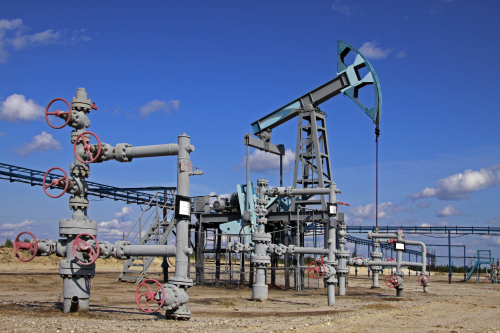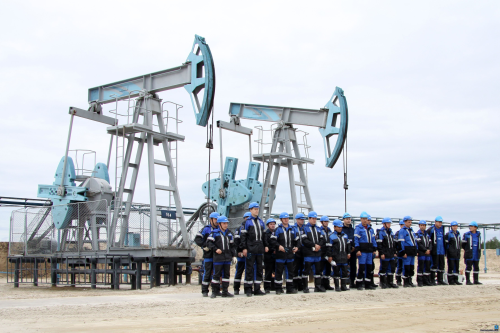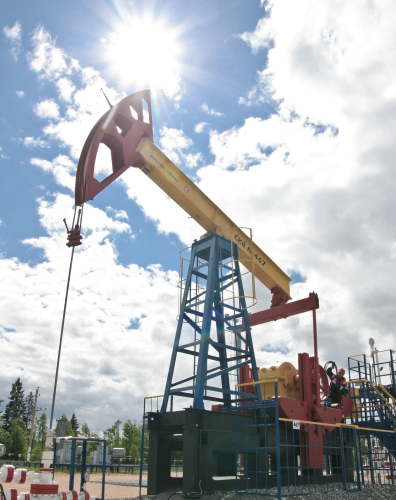


The Russian pumps market currently has 93% of the market share belonging to two types of pumps – bottom-hole pumps and centrifugal pump units. The market share of the bottom-hole pumps in Russia is decreasing by 1-2% every year, as it is losing the fight to the segment of electric centrifugal pump units in the country's oil market, according to government data. Currently, the share of bottom-hole pumps is only at about 35% of the market, while in 2010 this figure was 41%. At the same time the share of electric centrifugal pump units for the same period increased from 54% to 58%. However, the growth of the sector is predicted to stop in coming years. The total volume of the Russian oil pumps was 36,200 units in 2012.
Bottom-hole pumps are mostly common in the oil fields of Tatarstan, Bashkortostan and Upper Volga, which are at a late stage of exploitation and have a large share of high-viscosity oil and stripped well. They occupy up to 90% of the local markets.
Electric centrifugal pump units are generally used by large producers as they are providing the highest efficiency of oil extracting at the high-rated wells.
Other types of pumping equipment in Russia occupy the remaining 7% of the market. They are mostly used in the geologically complex objects. They include progressive cavity pumps – for deviated wells, for the extraction of high-viscosity oil and oil with the gas content, electric diaphragm pumps – in wells with high level of mechanical impurities and some others.
Bottom-hole pumps were steadily ground due to the several reasons. In recent years it was not commissioned in any new large oil fields that are equipped with the conventional pumping unit. Experts also pointed out the increase of the quality of Russian-made electric centrifugal pump units, which in particular let them to occupy the segments of the market that previously has completely belonged to bottom-hole pumps, in particular the segment of the stripper wells.
Market structure changes
Electric centrifugal pump units in Russia are extracting 70% of oil out of the total volume. It is used by all Russian oil companies – in particular Lukoil (57 new wells equipped with this pumps in 2011/12); Rosneft (236 wells); Gazprom Neft (98); and Surgutneftegas (97). Bottom-hole pumps are currently used for extracting 15% of the total Russian oil. According to the forecasts of the experts of the Ministry of Energy, by 2020 the share of the bottom-hole pumps in the total structure of the market could fall from the current 35% to 24%, while the share of electric centrifugal pump units during this period in general will not change.
Mostly active bottom-hole pumps are losing ground in Western Siberia where currently it is exploring new wells that will be equipped with the electric centrifugal pump units as well as other types of pumps.
However, experts pointed out that the share of bottom-hole pumps is also due the structure causes. For example, bottom-hole pumps have a very long time of possible exploitation. With the proper use it could last for 50 years. Also in Russia bottom-hole pumps are rather expensive, while their service network is poor.
According to official statistics, the main producers of bottom-hole pumps in Russia are: JSC Izhneftemash and Reductor; FSUE Uraltransmash (Ekaterinburg); and foreign companies Baku Worker (Azerbaijan); and Almaty Heavy Machinery Plant (AZTM) (Kazakhstan).
Also in recent years there has been a considerable increase in the number of wells equipped with screw units both with a downhole motor and a surface motor. This trend is typical mostly for the new fields with high-viscosity oil, when the use of electric centrifugal pump units is inappropriate. From 2007 to 2012 the share of this type of pumps in the structure of the Russian market rose by two times according to independent experts' estimations – from 1.5% to 3%. All experts currently predict strong growth in demand for these types of pumps in coming years.
In the long term, the compared share of bottom-hole pumps and centrifugal pump units will fall while the share of other types of pumps will rise. Experts mostly attribute this trend to the changing demands of the Russian oil industry with an increase of the water cut of the wells and decline of the reservoir pressure as well as with the expected development of shelf oil fields.
Centrifugal pump units are stable
The segment of centrifugal pump units is the largest segment of the pump market for oil extracting. The main advantages of centrifugal pump units lie in the best possible adaptation to the relevant terms of oil production, the possibility of the selection of collecting plants and selection of the most effective oil production technology in a wide range of complicating factors depending on the certain bedded oil well characteristics, which is very important in Russia.
However, the segment of centrifugal pump units is characterized by the high level of saturation and has very limited growth opportunities. Indirectly this is evidenced by the sufficiently restrained paces of growth of this market (even before the crisis) and high consolidation activity among its participants. The main Russian producers of centrifugal pump units are PC Wrestler (Moscow), Alnas (Moscow) and Novomet-Perm (Perm region).
According to data from the Russian Ministry of Energy in 2012 the capacity for the production of centrifugal pump units in Russia actually overcomes the level of demand for such types of pumps in the market. Experts pointed out that this could lead to the fall of the profitability of the production as the companies currently face difficulties selling their pumps.
However, centrifugal pump units also benefit from imported production. Foreign manufacturers usually are American companies (for example REDA/Schlumberger, Baker Hughes/Centrilift) and Chinese companies. It is interesting that the share of Chinese manufacturers every year is growing, while the share of USA producers decreases. Import production currently occupies about 15% of the centrifugal pump units market of Russia with 9% going to Chinese companies, and 6% to American.
Currently the volume of the Russian centrifugal pump units is estimated at about 21,000 units per year. Prior to 2006 the volume of the market was growing 3-6% percent per year, due to the active development of oil production in Russia and the launching of the new investment projects in the area. After 2006 the average growth rate of the industry was estimated to be 0.6%. It is interesting that according to most forecast the volume of the market will continue to rise at approximately the same level of growth until 2015, while after that it will enter the stagnation period.
“Such prospects are determined by several factors: first, it's a high level of market saturation. The growth opportunities for centrifugal pump units are very limited because it is already in overproduction. The most important stimulus for growth may be the development of innovative types of equipment,” said analysts at Russian analytical Company Research Techart. According to their estimations the volume of the growth of the segment will be higher than in previous years at 1.83%.
By 2015, the volume of the market should reach 22,300 units in natural terms and RUB 28.9bn (US$0.99bn) in monetary terms. After 2015 the volume of production of these types of pumps in Russia as well as the volume of the market will not grow with some opportunities to slightly fall.
Advantages of Russian producers
Despite the number of negative trends, Russia is still one of the world's largest markets for oil pumps, and the reason why the market looks like very attractive for the foreign players. However, Russian producers still occupy the largest shares in all segments of the market and the situation is not likely to change in coming years. Thus, the share of imports in the market of bottom-hole pumps currently does not exceed 5%.
According to official statistics of the Ministry of Energy, Russia's largest producers of bottom-hole pumps and their drives are Izhneftemash, which accounts for largest share of the market. Other large producers include Reductor, Uraltransmash and PKNM Elkam-Neftemash.
Russian producers have such strong position mostly because they offer attractive prices. Also they have the better network of service and repair of their production than the foreigners. Russia entered the World Trade Organization (WTO) in August of 2012, but this actually will not change the situation as the custom duty on the import of pumps remain at the relatively low level of 5%.
Major project launched
Neftekamsky Engineering Works has recently launched a large-scale investment project that will be very important for the Russian oil pumps industry. It created the enterprise for the production of trunk oil pumps. The planned capacity of the project is 100 units per year, so theoretically this one enterprise will be able to meet the needs of the whole domestic market of trunk oil pumps in Russia. The total budget of the project is more than RUB700 mln (US$23 million). Until 2013 the company intends to sell trunk oil pumps of the total cost RUB2.3bn (US$75 million). The power supply of the research complex for trials of pumping units will be amounted to 25 MW.
So far, Russia has not had such large-scale production facilities for these types of pumps. In fact Russia actually did not produce trunk oil pumps at all. Russian companies were mainly used Ukrainian units manufactured of the plant Nasosenergomash.
They were developed about 30 years ago and no longer meet the modern requirements for energy conservation and efficiency. The only one alternative of these pumps were expensive units of the companies Sulzer, KSB, Flowserve. Meanwhile, the demand for these machines in Russia in recent years is high.
According to chief designer of the project Yury Obozni the first six units will be produced and will go through full-scale certification testing in 2013. The units will be designed to supply oil to the pipelines with a capacity of 1250, 2500, 3600, 5000, 7000, 10 000 m3/h. Experts say that the new units can easily replace import analogues on the domestic market in coming years.


